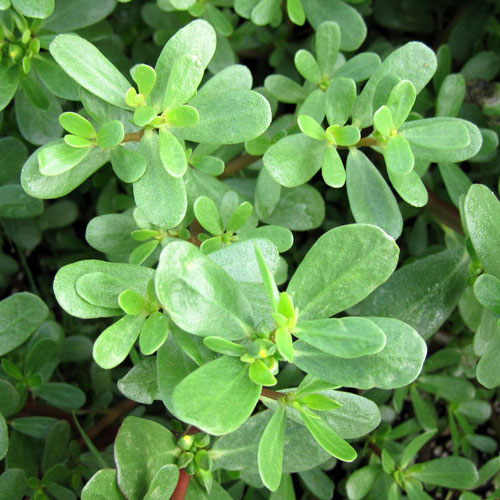20 BEST VEGETABLES FOR GLOWING SKIN
1)ARUGULA VEGETABLE 2)BEETROOT VEGETABLE 3)BEET GREENS VEGETABLE 4)BITTER GOURD VEGETABLE 5)BOK CHOY VEGETABLE 6)BOTTLE GOURD…

Plants and trees grow wonderfully in wild as well as in tropical regions. Homeopathic medicine has the essence of so many flowers which are rich in nutrients and minerals. Every plant is unique and grows in different manners. The leaves and stems are store house of the plant. This topic deals with a plant named common purslane which is found throughout the world. The botanical name of this plant is portulaca oleracea. This plant is widely used in east Mediterranean countries and dates back to seventh century BC. This plant belongs to portulacaceae family with more than 120 different species found in that family. The other names of this weed is duckweed, little hogweed, mother-of-millions, pusley, resurrection plant and wild portulaca.
| Nutrients | Nutrition Value | % DV of RDA |
|---|---|---|
| Energy | 16 Kcal | 1.50% |
| Carbohydrates | 3.4 g | 3% |
| Protein | 1.30 g | 2% |
| Total Fat | 0.1 g | 0.50% |
| Cholesterol | 0 mg | 0% |
| Vitamins | ||
| Folates | 12 µg | 3% |
| Niacin | 0.480 mg | 3% |
| Pantothenic acid | 0.036 mg | 1% |
| Pyridoxine | 0.073 mg | 5.50% |
| Riboflavin | 0.112 mg | 8.50% |
| Thiamin | 0.047 mg | 4% |
| Vitamin A | 1320 IU | 44% |
| Vitamin C | 21 mg | 35% |
| Electrolytes | ||
| Sodium | 45 mg | 3% |
| Potassium | 494 mg | 10.50% |
| Minerals | ||
| Calcium | 65 mg | 6.50% |
| Copper | 0.113 mg | 12.50% |
| Iron | 1.99 mg | 25% |
| Magnesium | 68 mg | 17% |
| Manganese | 0.303 mg | 13% |
| Phosphorus | 44 mg | 6% |
| Selenium | 0.9 µg | 2% |
| Zinc | 0.17 mg | 1.50% |
There is one toxic chemical namely oxalate in these plants.This can be removed by cooking properly.Generally people do not consume these plants in large quantities.